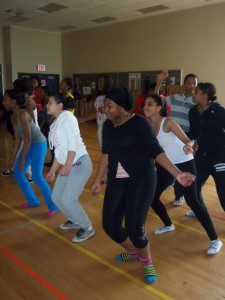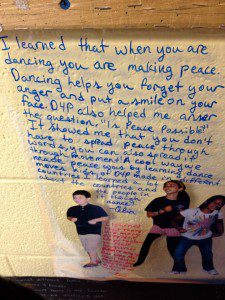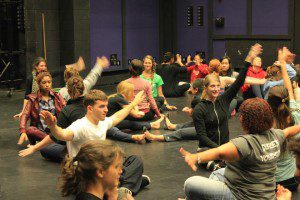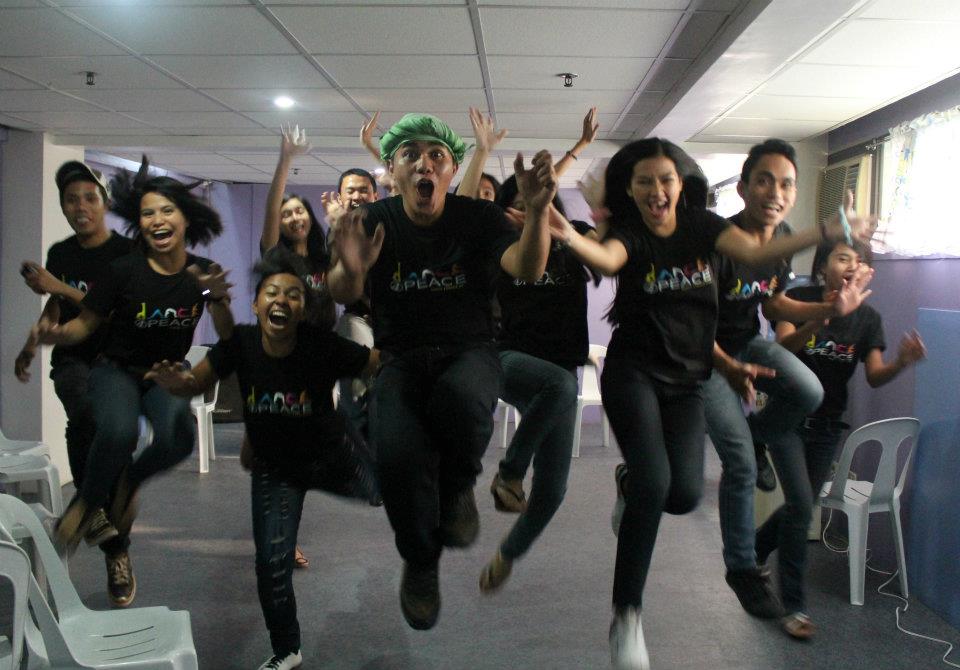 Social change through the art of movement? How does that work? Ask Move This World, an innovative non-profit which not only has that as its mission, but also has a sustainable, revenue-generating, scalable model.
Social change through the art of movement? How does that work? Ask Move This World, an innovative non-profit which not only has that as its mission, but also has a sustainable, revenue-generating, scalable model.
So, what does this look like in practice? Facilitators, known as PeaceMovers, will visit a class twice a month, implementing a movement-based curriculum. Paula Olson shares what happened when she was facilitating a lesson on stress management with a group of female students in a Washington, DC school, “One of the girls asked me how stress has affected me. I chose that day to share a difficult personal story. About a year ago, a man I knew, worked with, and trusted, sexually assaulted me. Thankfully, I was able to get out of the situation and was supported by my organization to get help. However, for a brief period, I was living in fear and to put it mildly, I was ‘extremely stressed.’ At one point, I experienced temporary paralysis in my legs and was unable to walk.” After class, one of the students came up to Paula and shared that she’d had a similar experience, but had not been able to talk about it with classmates or friends. “I left the classroom that day knowing that I had been placed here for a reason. Even if that was the only “break-through” I saw immediately and the semester ended without any more intimate moments like this, I knew what we do as PeaceMovers for Move This World is meaningful, important, and necessary. From this one conversation, this one glimpse into how we can affect the children we work with, this one ripple, I know there are so many more growing,” says Olson.
 Move This World (formerly Dance 4 Peace) is a global peace education nonprofit that engages young people through dance and creative movement to transform violence, conflict and bullying in schools. They offer an innovative curriculum that promotes empathy, mediation skills, anger management, and conflict transformation to instill social and emotional competencies for peace. With programs in 4 US cities (Baltimore, Newark, New York and Washington) as well as in various schools and community centers in Colombia, Germany, and the Philippines, Move This World is mushrooming into a global movement. In just two and a half years, Move This World has worked with over 9,000 youth in 22 cities on four continents.
Move This World (formerly Dance 4 Peace) is a global peace education nonprofit that engages young people through dance and creative movement to transform violence, conflict and bullying in schools. They offer an innovative curriculum that promotes empathy, mediation skills, anger management, and conflict transformation to instill social and emotional competencies for peace. With programs in 4 US cities (Baltimore, Newark, New York and Washington) as well as in various schools and community centers in Colombia, Germany, and the Philippines, Move This World is mushrooming into a global movement. In just two and a half years, Move This World has worked with over 9,000 youth in 22 cities on four continents.
Their PeaceMovers are a mix of nonprofit, education, and arts professionals who are trained annually at the MTW Global Summit, with refresher trainings held in the spring. They are trained in the MTW methodology: movement-based activities to teach learning objectives from identifying emotions to mediation. PeaceMovers also learn how to implement the curriculum from pre-kindergarten all the way through the end of high school, which spans 26 modules with 10 sessions per module. In this way, programs are targeted to grade-level specific competences, and students can grow with the program. The PeaceMovers will practice activities in the curriculum, learn overarching concepts like classroom management, and learn to lead sessions themselves.
Most often students come to the program through partnerships with schools and community centers. Over the 10 sessions of each semester, Movers implement a series of activities that hit learning objectives while being entirely movement based. At the end of each semester, they share what they learn in Share Outs (processing and feedback sessions), and will build on these skills the next semester.
 In a typical session, they might share a favorite move in the Name Pass, listen and respond to music that stirs emotions, work in small groups to develop choreography around a given prompt, or engage in other exercises set to music and movement. Each session lasts about an hour, and ends with a relaxation exercise that is a critical part of the routine.
In a typical session, they might share a favorite move in the Name Pass, listen and respond to music that stirs emotions, work in small groups to develop choreography around a given prompt, or engage in other exercises set to music and movement. Each session lasts about an hour, and ends with a relaxation exercise that is a critical part of the routine.
While other programs have tried similar approaches, how is it possible that they’ve grown to have 6 full-time staff (with plans to add 5 more in the first half of 2013) and 8 part-time staff with 50 facilitators in the US, 20 in Colombia and 20 in the Philippines and 70 participating classrooms? MTW has a few things going for it that have allowed it to become so successful. First they use a train-the-trainer model in which they train people who can multiply their impact, such as teachers, administrators, parents… They also have locally appropriate revenue models. For example, in the US funding comes mostly from public budgets that are earmarked for anti-bullying programs, whereas in the Philippines trainers pay in order to get certified as MTW Peace Movers. But they are also looking at developing corporate trainings which could then subsidize school-based workshops. Finally, they are also constantly innovating their curriculum, incorporating feedback from students and facilitators. By marrying neuroscience, movement science, and peace education, MTW is identifying ways in which movement-based learning can be integrated into the academic curriculum as well as school safety and behavior. They hope to have a ripple effect of peace and safety throughout the larger communities that host MTW programs.

